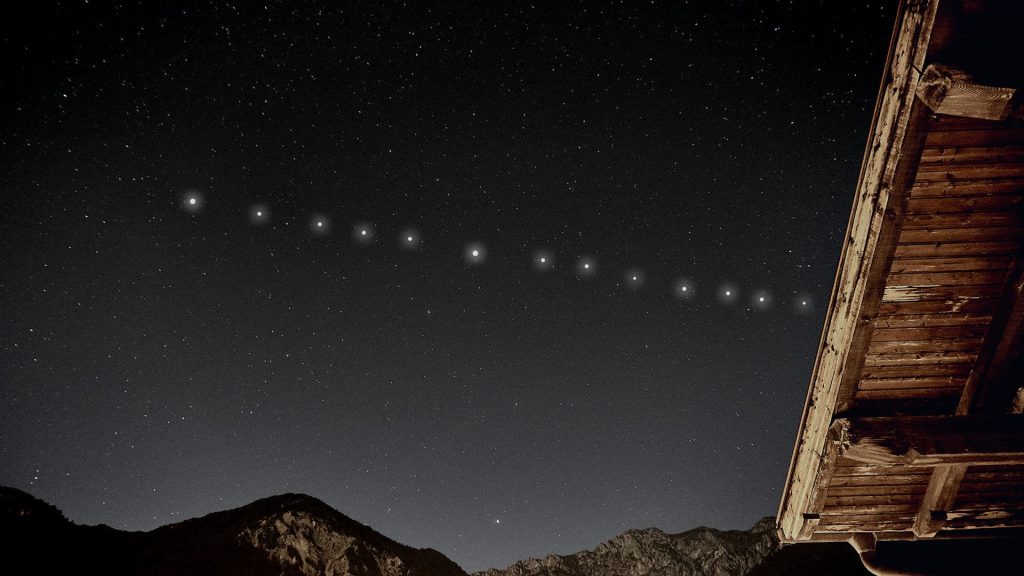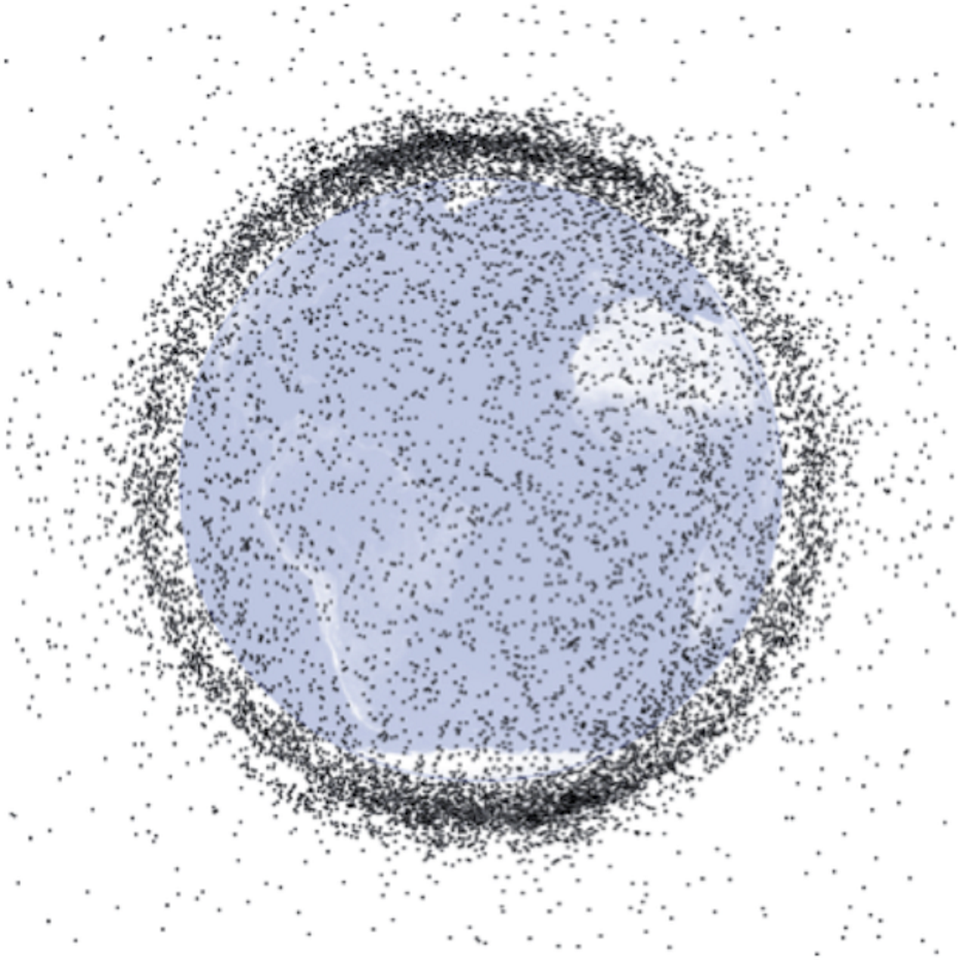
SpaceX expanded its constellation of low Earth orbit satellites on Saturday with the launch of 53 Starlink satellites from Florida.
A Falcon 9 rocket lifted off from Cape Canaveral Space Force Station at 7:19 a.m. EST and deployed the satellites about 16 minutes after launch.
The rocket’s reusable first stage, which has been used for multiple launches, including the first crewed test flight of SpaceX’s Crew Dragon spacecraft, successfully returned and landed on the “Just Read the Instructions” droneship in the Atlantic Ocean.
Starlink is a satellite-based global internet system that SpaceX has been building for years to bring internet access to underserved areas of the world.
A quick recap in numbers
- There are approximately 3000 satellites in Earth’s orbit today if we exclude Starlinks.
- 8,000 satellites sent into orbit since the Soviet Sputnik, of which 2,218 are still in operation. This took over half a century.
- On May 27th, 2021, SpaceX launched its 29th batch of 60 satellites. They are launching new batches every week.
- Starlink has approximately 1740 satellites in orbit today
- Starlink has been cleared for 12000 units so far, but they are planning to add a total of 42000 satellites in a decade.
- The estimated lifespan of a satellite is a mere 5 to 10 years
Current Starlinks are brighter than 99% of the 3000 other satellites in orbit because they are in lower orbits, closer to the surface of Earth, and more reflective than Starlink engineers predicted.
It’s not hard to see the outsized ambitions of the SpaceX project. Just the brightness and the sheer number of new additions to the number of Low Earth Orbit (LEO) satellites should be a cause for concern.
Here are the main problems with SpaceX’s internet mega constellation project.
1. The brightness of the satellites
The luminosity and the speed of the satellites obstruct astronomy data, muddy up radio and telescope imaging.
With large numbers of bright, rapidly moving satellites, particularly if you’re searching for changes from frame-to-frame (like many current and future observatories are designed to do), you have to throw out any exposure frame with these artifacts in them.
What is SpaceX doing to address the problem?
CEO Elon Musk dismissed the concerns by launching the unconvincing DarkSat and VisorSat. DarkSats are painted black and/or coated with an anti-reflective material. VisorSats are equipped with individual visors, which seems more promising, but we do not have enough data yet.
On their website, they claim to have an unrelenting commitment to making the satellites invisible to the unaided eye, but we haven’t yet seen promising results. It adds to the issue that these satellites fly in low orbit.
SpaceX has requested permission to fly lower orbit partly to avoid collisions with other objects.
The supposed DarkSat is still extremely high in luminosity and is still a colossal light pollution source. There are thousands of videos and some studies of just how bright Starlinks are. DarSats still obstruct astronomical data on radio images and are still brighter than any other object in the night sky.
2. Spacejunk
According to the European Space Agency (ESA), about 6060 rocket launches since the space age started in 1957 (excluding failures). These placed around 11 000 satellites into orbit o which there are 4300 functioning. I assume this number includes the Starlink satellites as of the end of May this year.
About 28 600 pieces of debris objects are regularly tracked by Space Surveillance Networks and maintained in their catalogue.
There have already been at least six Starlink failures since their first launch. Their lifespan is a mere five to 7 years to start with.
We could potentially be trapped on Earth. Starlinks form a mesh around the planet, and if things go awry, we may not be able to remove them from orbit.
What’s SpaceX doing to mitigate the problem?
The Starlinks are supposed to thrust themselves into lower orbit once they are no longer functional and burn up in Earth’s atmosphere. In theory.
But those malfunctioning or colliding will be adding possibly tens of thousands of large pieces of space junk into earth orbit. Depending on how far they are and their size, they will eventually reenter the atmosphere, but it takes decades in some cases.
And as of now, Spacelink is increasing the number of satellites and potential space junk by several orders of magnitude. We are talking about going from about 3000 satellites to 45 000 in Earth’s orbit.
Most satellites today are launched by private companies, not governments, and most satellite debris remains abandoned in orbit, because there are no rules about clean-up. There are thousands of pieces of this space junk, ranging in size from bolts to bus-sized dead satellites.
So why does SpaceX need so many satellites for high-speed internet?
It’s because, at any point, there has to be a satellite above one’s location connected to phased array antennas on the ground.

3. Collision
Despite Musk’s reassurances that collision is unlikely, the first incident already took place. On September 2, 2019, the European Space Agency was forced to move away from one of its Earth observation satellites to avoid a collision after Starlink refused to change the path of its satellite. May I say: The audacity!
Space collisions add thousands of pieces to the space junk already orbiting Earth’s atmosphere. The Starlink satellites are designed to deorbit within five years in the case of failure.
But is it going to be enough?
The question is more urgent than ever, as, on May 27th, 2021, SpaceX launched its 29th batch of 60 satellites. They have been launching new satellites almost every week since their start.
Starlink wants to avoid potential collisions by bringing its satellites much closer to Earth, increasing the problem of their brightness. It sounds like a lose-lose situation to me.
4. The Kessler Syndrome
We are crowding the night sky to the point of no return.
There is fierce competition between billionaires owned companies to establish their hegemony over satellite internet — Kuiper by Amazon, OneWeb by billionaire Greg Wyler, and the Chinese Hongyan.
There can be only one winner. What does that mean for us? It means that the night sky will be littered with useless satellites by the companies that did not claim sovereignty in the race.
Despite the 1967 Outer Space Treaty, which declared outer space to be a common good of humankind, the privatisation of the night sky is happening right under our noses.
We are a stargazing species. And today, we risk losing the night sky to a handful of greedy corporations and their outsized, unchecked ambitions.
5. The end of remote and offline vacations
Is it worth it? Do we need internet at every remote location on Earth?
I am going to answer that with a resounding no. After reading extensively on the subject, it looks like remote military bases and some sparsely populated areas could benefit from the program. But there are other solutions available for more reliable internet connection in these areas, which do not require 42000 satellites swarming the night sky indefinitely. On an even more sinister note, Bankrupt OneWeb seeks license for 48,000 satellites, even more than SpaceX.
Today, space is where corporate greed induced wars are being fought.
Humanity has connections to the stars that extend back to the dawn of our existence. We are made of material from ancient stars. I can’t think of anything else more culturally significant and a better balm to the human soul than the sight of the night sky.
We are now more disconnected from the sky than ever because more than half of humanity lives in cities. But at least we had the opportunity to go on a hike, drive to a remote area and bask in the mysteries of the night sky.
The Native Skywatchers program celebrates humanity’s time-honored love of the night sky and shares Indigenous knowledge of astronomy. A Dakota Elder recently shared her traditional knowledge of the skies: the Blue Woman spirit To Win lives in Wichakiyuhapi (the Big Dipper), where she guides new babies from the Star Nation into our world and waits to greet our spirits at the door as we leave our world.
These giant companies only respond to customer pressure. International regulations are slow and a painstaking process. All the while, SpaceX launches 60 satellites into space almost every single week.
I don’t think a faster internet connection and having high-speed internet in remote areas is worth losing an unobstructed view of the night sky.
We are a stargazing species. And today, we risk losing the night sky to a handful of greedy corporations and their outsized, unchecked ambitions.
Next time you are outside, take a look up at the sky. Your view may change forever if we do not act, voice our concerns and pressure these mega corporations into adjusting and working with international organisations.
The night sky is a fundamental human right. It is humankind’s common good. [Medium, AP]
Now subscribe to this blog to get more amazing news curated just for you right in your inbox on a daily basis (here an example of our new newsletter).
You can also follow us on Facebook and/ or Twitter. And, by the way you can also make a donation through Paypal. Thank you!
You should really subscribe to QFiles. You will get very interesting information about strange events around the world.














earth is flat and your wicked leaders know it.
You are believing in a transvestite actor, this is not “satellites”.
Earth is flat, you’re being lied to.
Read the KJV.
IRAN “Double Quake” 180 Dead And 1,300 Hurt! – YouTube
Two major quakes hit southern Iran one minute apart; one dead
The powerful tremors were also felt in nearby provinces, as well as in Dubai.
https://www.aljazeera.com/news/2021/11/14/two-major-earthquakes-hit-southern-iran
Prelude to attack on Iran ??? coming NOV soon!
AMEN F’EM ALL… Do not buy Walmart , Target , Boycott Christmas and so on.. SS again your servers acting not right..
I buy old things. Well-built old things for my house. They don’t break like redchinesey shjt products. These are American, West German, or Japanese products from sellers online.
Yeah, low orbit. Perfect platform for detonating an EMP, and blame whomever the villian d’jour is that day. Ignite WWIII. Go for it.
Also, they can spy on everyone better. Anything the satanic elitists put out is for their benefit, not humanity’s benefit. All their philanthropic charities are money laundering scams. UN are terrorists and pedosatanists too.
F ’em all!
Boycott all these corporate communists and satanists. Cut your cable. Stop going to sports events. Don’t patronize music festivals. Cancel your twatter and facecrooks too.